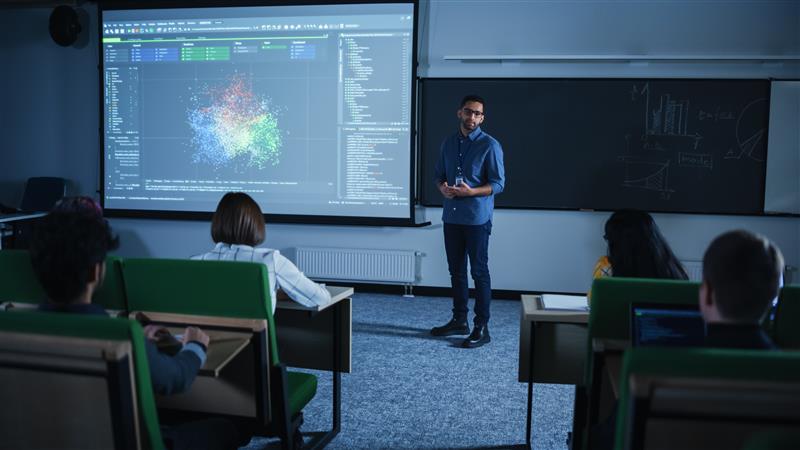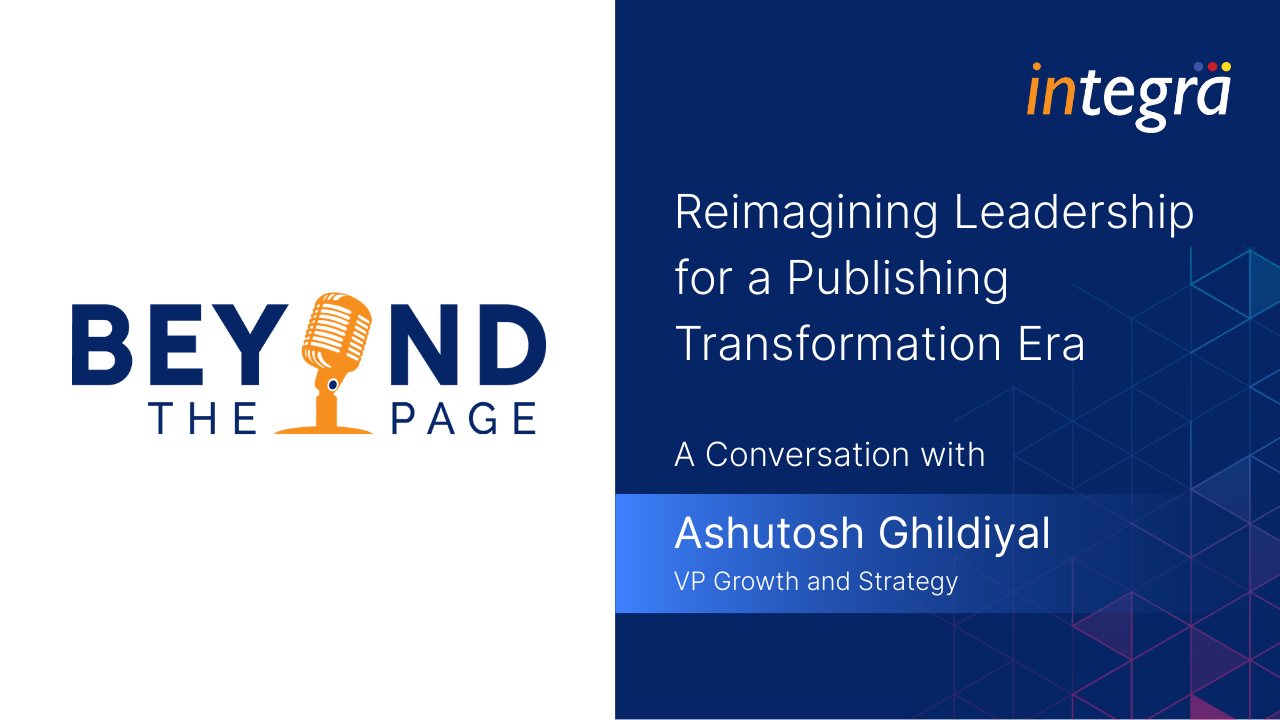Human + AI, Rethinking Collaborative Learning Experiences in Education

In early 2024, our article “The Emergent Role of Artificial Intelligence in Fostering Collaborative Learning Experiences” described how AI tools supported teachers through automation, adaptive content, and real-time feedback. Two years later, these systems take on a more active role in group work. They review discussion data, surface participation patterns, and offer prompts that help keep conversations moving. Recent studies report improvements in engagement and more even distribution of student contributions when teachers supervise and adjust system behavior.
For education publishers and EdTech teams, this represents a shift in design priorities. The focus is no longer limited to individual learning paths. Collaborative tasks now include AI systems that contribute procedural support during group interaction. The practical question is how to design materials and platforms that account for human-AI group work rather than treating AI as a separate add-on.
AI in the Circle: Joining the Classroom Conversation
Research published between 2024 and 2025 reframed how AI functions in group learning. Frameworks such as AI-Agent Supported Collaborative Learning and Human-AI Collaborative Learning describe systems that take part in classroom dialogue by analyzing discussion data, identifying uneven participation, and generating short prompts that help maintain momentum.
This development widens the scope of collaborative learning. Students interact with peers while also receiving automated cues that help coordinate turn-taking and keep groups on task. Early studies report lower cognitive load for students who rely on these prompts while instructors remain actively involved. For publishers and EdTech teams, the implication is practical: materials and platforms need to support shared learning settings, not only individualized instruction.
Insights from Current Research on AI and Group Work
Studies published across 2024–2025 examine how AI affects group performance and interaction quality. Research using AI conversational agents shows higher levels of teamwork, persistence, and peer exchange compared with traditional computer-supported collaboration. Several studies also report more balanced participation and modest gains in students’ confidence during group tasks.
Learner participation patterns noted in these studies include:
- Active questioners: students who initiate prompts and help sustain discussion.
- Responsive contributors: students who respond consistently and extend peers’ ideas.
- Quiet participants: students who follow the conversation but contribute less often.
These profiles illustrate that outcomes depend on instructional design as much as on system features. Models that specify when the system generates prompts—rather than producing frequent, open-ended cues—tend to support clearer group coordination and reduce unnecessary interruptions.
Designing AI-Supported Collaborative Learning Experiences
These principles reinforce collaboration through clarity and trust. For EdTech and publishers, embedding these values in system design supports scalable yet human-centered collaborative learning experiences.
Recent research can be translated into product and instructional decisions by focusing on three practical principles that shape how AI fits into group work.
- Transparency
Clear explanations of system behavior help users understand why a prompt or summary appears. Educators and students benefit from knowing when the system is monitoring participation, generating guidance, or compiling discussion points.
- Shared Control
Teachers retain responsibility for instructional choices. AI outputs can highlight trends or supply prompts, but decisions about pacing, grouping, and intervention remain with the instructor.
- Accessibility and Data Practices
Effective tools work across devices, languages, and connectivity levels. They also document how student data is collected and used so that schools can review and audit system behavior when needed.
These principles support predictable system behavior and reduce friction during classroom use. For publishers and EdTech teams, applying them early in product development helps align tools with real instructional environments rather than idealized use cases.
Navigating Risks, Limits, and Human Contexts
Expanding AI-supported group work raises practical and ethical issues that vary by context. Schools with limited connectivity or older devices may struggle to run systems that require continuous interaction data. Teacher preparation also remains uneven; many instructors need clearer guidance on when to use AI-generated prompts and when to step in directly.
Data quality and privacy introduce additional constraints. Models trained on uneven or biased datasets can reinforce language or participation gaps. Transparent logging and periodic reviews help schools monitor how the system behaves in different classrooms.
Group work also depends on social conditions that technology cannot fully manage. Students participate more consistently when they feel comfortable contributing and when group norms are clear. If AI prompts are frequent or poorly timed, they can disrupt discussion rather than support it. Designing for collaborative work therefore requires considering both technical outputs and the classroom dynamics they influence.
Next Steps for Meaningful Human–AI Collaboration
Research is beginning to examine classrooms that use more than one AI system at a time. In these studies, separate models generate prompts, track participation trends, and review the tone of student exchanges. These outputs give teachers a clearer view of how groups are interacting, not only how they perform on tasks. Instructors then adjust group structure, pacing, or follow-up activities based on this information.
This shift places teachers in a coordination role. Rather than responding to each prompt or data point directly, they review patterns over the course of an activity and decide where human guidance is needed. Emerging work suggests that these tools can help teachers focus on reflection and feedback instead of minute-by-minute management.
For EdTech teams and publishers, several directions follow from this research:
- Develop tools that examine the quality of student interaction, not only correctness or completion.
- Integrate real-time discussion data into editorial and curriculum workflows where appropriate.
- Offer training materials that show teachers how to monitor and adjust AI-supported group work.
Future practice depends on aligning system outputs with instructional aims such as curiosity, participation, and peer exchange. AI can offer timely cues and surface patterns, but the goals and expectations for group work remain set by the teacher.
What Comes Next for Publishers and EdTech
When we examined this topic in 2024, most findings were preliminary and focused on what AI tools might contribute to group work. Current studies now provide clearer evidence from classroom use. They show where these systems help, where they create friction, and how teacher oversight shapes their impact.
For publishers and EdTech organizations, the work ahead involves refining existing approaches rather than redesigning them. Each new study adds detail about when automated prompts are useful, how often they should appear, and how students respond to them. Tools that account for these patterns are more likely to support group activities without disrupting them.
As AI features become more common, the central design requirement remains the same: group work should continue to reflect the social goals of education. System outputs can guide participation or highlight patterns, but teachers define the expectations and norms that give collaboration its structure.
Embedding AI in Editorial and Product Workflows
Integra works with education publishers and EdTech organizations to update how digital content is developed and maintained. Its teams combine editorial expertise with AI- and automation-supported processes that help manage content across K–12, higher education, and professional learning.
Our services include content development for K-12/school and higher ed publishers, product development and modernization, GenAI-based applications, and accessibility services. Each offering is designed to fit within existing workflows so that automated methods support, rather than replace, editorial and instructional judgment.
FAQs
1. How is AI used in collaborative learning without taking over the teacher’s role?
AI systems can surface patterns in group discussions, such as who is contributing and when, but teachers still decide how to respond. AI outputs function as reference points, while instructional decisions remain with educators.
2. What types of data do AI systems rely on during group activities?
Most tools use interaction data such as message timing, turn-taking patterns, or topic shifts. These signals help the system estimate participation trends but do not replace teacher review.
3. Are AI-driven prompts effective for all learners?
AI prompts may help students who need structure or who hesitate to speak, but they may interrupt students who prefer sustained dialogue. Effectiveness depends on timing, frequency, and teacher oversight.
4. How do teachers maintain control when AI tools provide real-time guidance?
Teachers manage when and how AI-generated prompts are used. Some choose to activate prompts only during specific phases of group work or review system outputs after the activity instead of during it.
5. How should AI-generated insights be incorporated into curriculum or editorial workflows?
Insights about student interaction can inform revision cycles, task design, or the placement of discussion checkpoints. Editorial teams can use these patterns to adjust materials without relying solely on performance metrics.
6. Can AI help address unequal participation in group settings?
AI tools can highlight imbalances, but addressing them still requires teacher action such as adjusting group roles, clarifying norms, or pacing discussions differently.
7. How do organizations ensure that AI does not reinforce existing biases in the classroom?
Regular audits, transparent logging, and the use of diverse training samples reduce the chance of replicating language or participation bias. Educators can also track where automated prompts consistently misinterpret student behavior.
8. How does Integra support organizations adopting AI-assisted content processes?
Integra provides editorial, development, and advisory services that help teams incorporate AI-supported methods without altering existing workflows. Its services focus on aligning automated outputs with human review and instructional goals.
Recent Blogs

Research Integrity in Action: Key Insights from Our Panel Discussion



